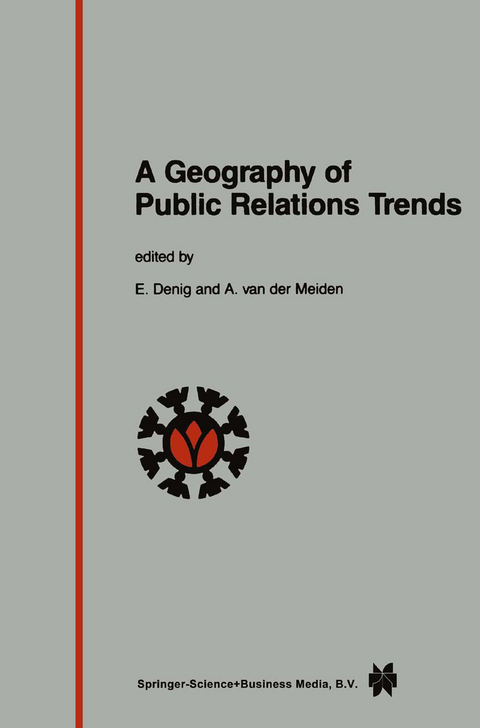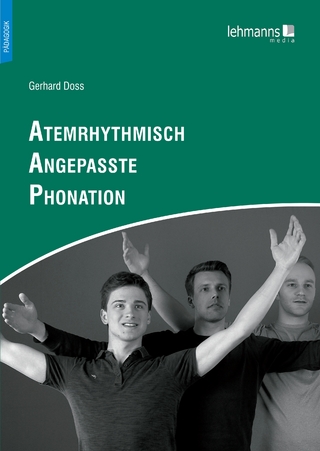
A Geography of Public Relations Trends
Springer (Verlag)
978-94-017-0577-6 (ISBN)
The10th Public Relations World Congress "Between People andPower" washeldin Amsterdam, theNetherlands, from 3-7 June1985. Thecongress wassponsored by IPRA (International Public Relations Association), in conjunction with NGPR (Netherlands Association for Public Relations and Information). An Organising Committee was founded, which was responsible for preparing and executing this world congress forabout 1000participants from over50countries. Analysis Inpreparing theprofessional programme, theProgramme Committee hadchosen a new set-up: composing a first congress-book "Analysis", which was sent for comment to 150public relations professionals and80public relations organisations allover the world. In "Analysis", eightimportant trends havebeenidentified and described. Megatrends, which as Naisbitt oncestated, may actas an early warning system. It is particularly crucial in the communications profession, where the transfer ofinformation issoimportant, torecognise andunderstand developments at anearly stage.
Theeight trends were described asfollows: "Alienation and resistance" : Mainly through thereceding of primary groups in society andthrough altered organisation structures a process of alienation hasgotten underway, which isdetrimental tothepersonal identity andthefeeling ofwell-being ofpeople. Cancommunication playanessential rolein stopping this process? What taskis given tothefunction of public relations within theorganisation? "Increasing complexity" : Theever increasing complexity of the information society andthescientific approach leadtoa knowledge gap; bridging thisgapis an assignment of public relations. "Specialisation and super-specialisation": Thegrowth ofknowledge and, atthe same time, its increasing compartmentalisation, lead to specialisation and even super-specialisation, a process in which the human scale is increasingly being endangered. Public relations hasa professional dedication to warn against negative developments intheinformation society. "Information paradox" : The development of information technology on a mondial scaleleads simultaneously andparadoxically totheneedforinformation on ahuman scale.
one The state of the art.- 1 The state of the art.- two The flow of information.- 2 Coping with information.- 3 Global information: the right to communicate.- 4 Measuring PR effectiveness.- 5 Intermediating writing: a new language, a new approach.- 6 Information industry: the impact of electronics on PR.- 7 Journalism: gatekeeper or pontiff.- 8 Managing communication in government.- three Organizational communication.- 9 Internal communication for greater involvement.- 10 Communicating within a multinational.- 11 Corporate culture.- 12 Meetings as a tool of internal PR.- 13 Methods of internal communication.- 14 Employees relations: social auditing and motivation.- four Changes in society.- 15 Implications of social and technological changes.- 16 How professional PR may contribute to strategic leadership.- 17 A look at the future, an overview of PR in the nineties.- 18 A look at the future from the continents.- 19 Complexity in international relations.- 20 Survival of the individual in the information society.- 21 PR in crises.- 22 Competition, overlaps and interrelations between various disciplines.- 23 The role of PR in an organisation.- five The profession and its ethics.- 24 Reliability of the PR profession.- 25 Management and moral standards.- 26 Consultants and their code of conduct.- 27 Public relations ethics in practice.- six Trends in education.- 28 A report on the seminar.- 29 The scientific setting of PR.- 30 Theoretical and practical objectives in PR education.- 31 PR education at universities.- 32 A college model.- 33 A university model.- 34 The Berlin model.- 35 Didactics of the case-study method in PR curricula.- 36 Systematics in PR case-studies.- 37 Student participation in research projects.- seven Developments in public relations.- 38 Worldwide marketing trends.- 39 Lobbyists: the unelected lawmakers.- 40 Sponsoring sports and culture.- 41 Significance of minority forces.- 42 Role of women in PR.- 43 Selling a sell-out: PR for mergers.- 44 Planning information for financial communities.- 45 Emergence of soft values.- 46 Communicating with colleagues: the organisation of a PR congress.- 47 Speaking out for ourselves.- 48 Recognizing the PR profession.- 49 Fund raising.- 50 Famous PR cases.- Biographies.
| Zusatzinfo | 3 Illustrations, black and white; X, 494 p. 3 illus. |
|---|---|
| Verlagsort | Dordrecht |
| Sprache | englisch |
| Maße | 155 x 235 mm |
| Themenwelt | Geisteswissenschaften ► Sprach- / Literaturwissenschaft ► Sprachwissenschaft |
| Sozialwissenschaften ► Kommunikation / Medien ► Kommunikationswissenschaft | |
| Sozialwissenschaften ► Soziologie | |
| ISBN-10 | 94-017-0577-1 / 9401705771 |
| ISBN-13 | 978-94-017-0577-6 / 9789401705776 |
| Zustand | Neuware |
| Haben Sie eine Frage zum Produkt? |
aus dem Bereich


